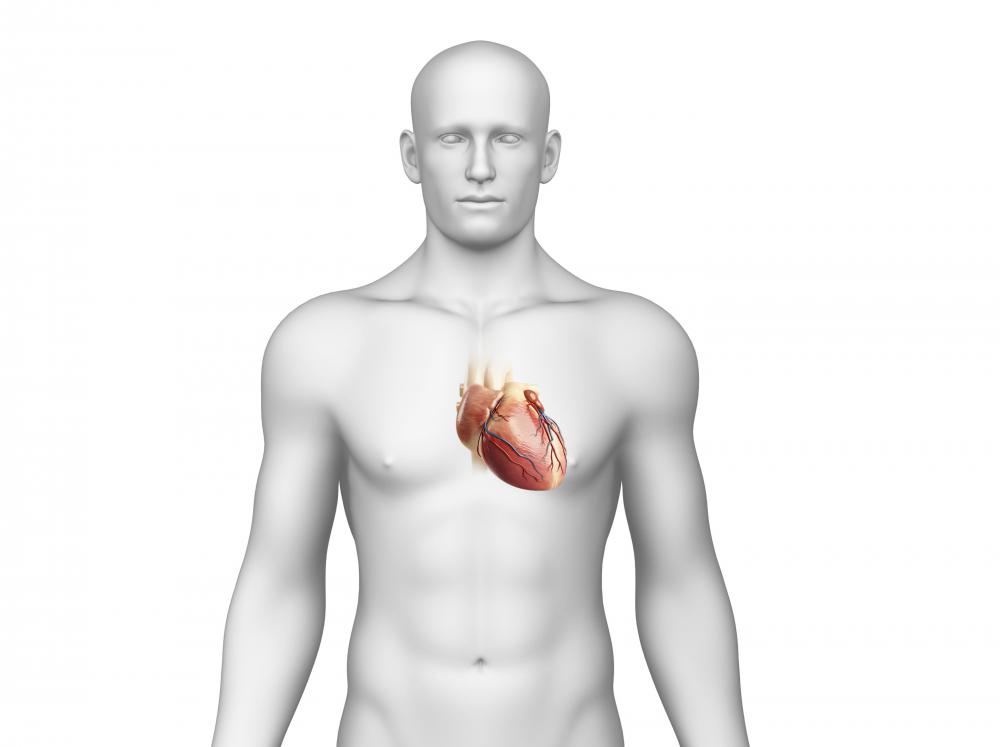At TheHealthBoard, we're committed to delivering accurate, trustworthy information. Our expert-authored content is rigorously fact-checked and sourced from credible authorities. Discover how we uphold the highest standards in providing you with reliable knowledge.
What Is Holt-Oram Syndrome?
Holt-Oram syndrome is a rare genetic disorder that causes heart problems and abnormal bone development in the upper limbs. These symptoms can manifest in myriad ways ranging from abnormalities that can only be detected via x-ray to a total absence of forearm bones. Some with Holt-Oram syndrome may have no thumb at all, or an elongated one that is similar to a finger. Skeletal abnormalities can affect only one or both sides of the body. Most patients also develop serious cardiac problems, such as a hole in the septum or an abnormal heart rate.
This condition is similar to Duane radial ray syndrome although that is the result of a different gene mutation. Holt-Oram syndrome is caused by a mutation in the TBX5 gene that affects the in-utero development of the upper limbs and heart. The gene likely plays a crucial role in the development of a normal four-chambered heart and arm and hand bones. The mutation characteristic of this syndrome interrupts these processes regulated by that gene.

A mutation in the TBX5 gene can cause myriad problems for those who develop Holt-Oram syndrome. The carpal bones are almost always affected, although this abnormality can only be revealed by x-ray. Arm bones may be underdeveloped or completely absent. The thumb can be too short or long enough to resemble a fifth finger. The collar bone and shoulder blades may also be affected by this syndrome.

Two-thirds of these patients also develop some kind of cardiac problem. Such problems are often life-threatening. Septal defects, like holes in the muscular wall separating the heart’s chambers, are common. Also common are abnormal heart rates that can be too fast or too slow. In some cases, the heart may be located towards the middle of the chest rather than on the left, and the veins can drain blood improperly.

Diagnosing this condition is a process that usually begins when a child is born, if arm and hand abnormalities are obvious. If not, Holt-Oram syndrome may not be suspected until cardiac problems manifest. X-rays generally reveal skeletal abnormalities, while an electrocardiogram can show if any heart problems are also present.
There is no cure for Holt-Oram syndrome, therefore treatment is often focused on relieving symptoms and improving patient functionality. Cardiac problems are usually evaluated and treated by a cardiologist. A septal defect can be treated with medication, but surgery is often also recommended. An orthopedic surgeon may be consulted with regard to severe skeletal abnormalities.

The mutation causing Holt-Oram syndrome is rare, affecting approximately one in 100,000 people. It can be inherited, resulting from only one copy of the mutated gene per cell. The majority patients, however, do not have any family history of the syndrome because their cases are the result of a new mutation. Those individuals carrying Holt-Oram syndrome may wish to seek genetic counseling before having children, as any biological child could stand a 50% chance of inheriting the mutation.
AS FEATURED ON:
AS FEATURED ON:














Discuss this Article
Post your comments